6 Best Business Management Software
Any company must-have business management software to run any type of business. Because good business management software will help in managing the company's day-to-day operations and allow them to automate their workflows, and save time on tasks that need to be done over and over again.
Business management software can also help you identify opportunities and increase profits, and make better decisions as a result of data collected from all areas of the company.
Now we understand the importance of business management software, and that brings us to the question:
What is business management software?
A business management software, by definition, is an application or set of programs that help businesses support, improve, and automate their processes by offering a combined solution that helps in managing the different areas of business like people, finance, operations, and sales, etc.
With all being said let's get to the list of the 6 best business management software:
1# Bitrix24
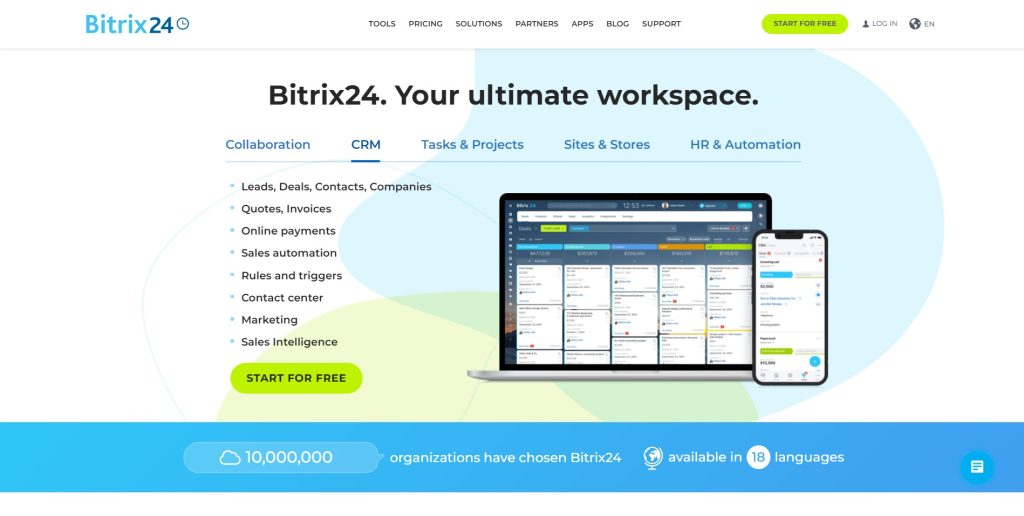
overview
Bitrix24 is total business management software that's 100% free. Bitrix24 offers a complete suite of social collaboration, communication, and management tools for your team. You get over 35 free tools, like CRM, tasks, document management, project management, time management, business process automation, invoicing, collaboration, absence management, email marketing, virtual PBX, shared calendars, company directory, HRMS, and much more.
Top Features
- Bitrix24 offers tools for Client Management like Product catalog, CRM, invoices, quotes, email marketing, and sales automation.
- Bitrix24 offers tools for Project Management like To-dos, checklists, workload planning, Gantt charts, task management, and reports.
- Bitrix24 offers tools for Communication like Messaging, group chats, video conferencing, and social networks.
Pricing

Bitrix24 has 4 different pricing plans:
- Free
- Basic: ($39 a month).
- Standard: ($79 a month).
- Professional: ($159 a month).
2# Scoro
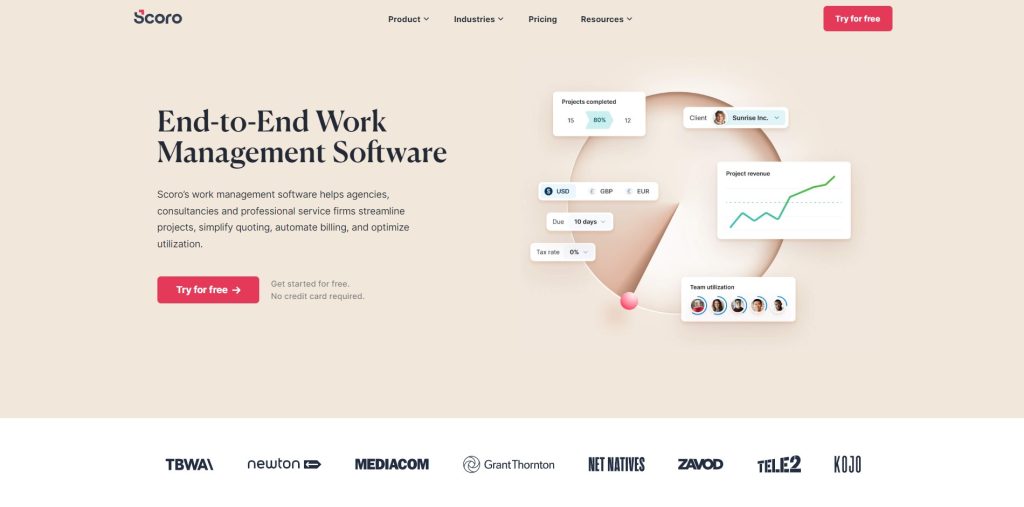
overview
Scoro is an end-to-end business management solution that allows professional and creative services to control their entire workflow from one place. Scoro has the tools you need to quicken your business processes through automation and data management.
With Scoro’s real-time Gantt charts, your team can track progress in real-time and lets you set tasks, dependencies, and events.
Top Features
- Real-time personalized dashboards to manage and track processes.
- Collaborative tools that build an out-and-out interlinked digital workspace.
- Live insights through key metrics and KPIs on every possible business aspect - from resource allocation and CRM to budgeting and project management.
- Integrations with over 1000 tools, including Zapier, GitHub, Xero, Gmail, and Slack.
Pricing
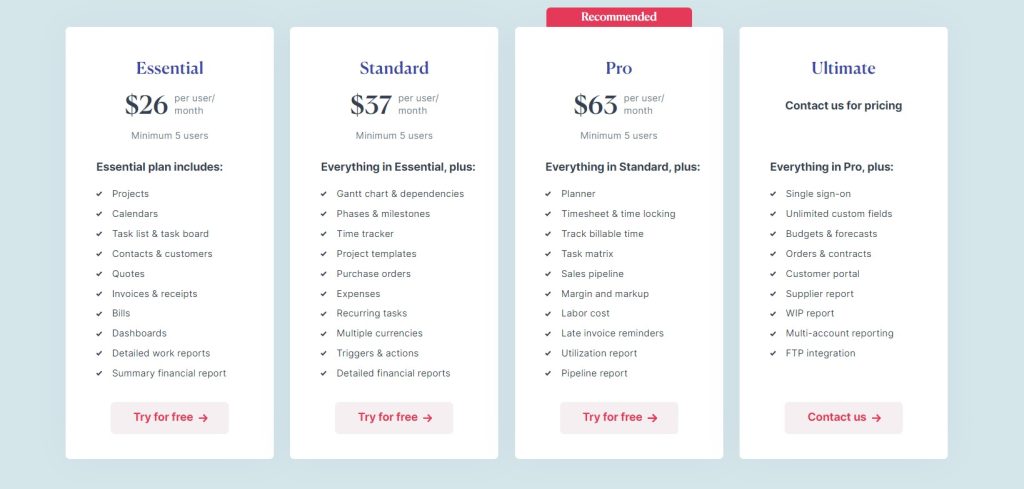
Scoro is available in four plans:
- Essential: $26 per user, per month
- Standard: Starts from $37/month/user
- Pro: Starts from $63/month/user
- Ultimate: Custom pricing
3# ProofHub
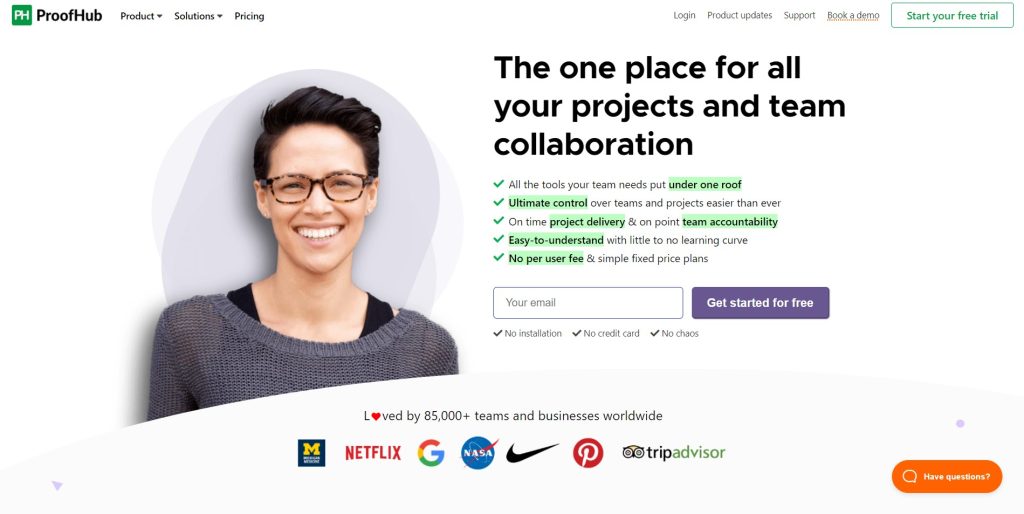
overview
ProofHub is a web-based project management software built to help teams collaborate, gain visibility to workflow, and finish projects faster. ProofHub is Used by nonprofits, universities, freelancers, and large enterprises alike.
Top Features
- ProofHub offers project management tools like a Table view, Boards, Gantt, and calendar to Bring your team together and manage projects in the right way.
- ProofHub allows you to assign personal tasks or assign them to multiple team members. Prioritize tasks with deadlines, time estimates, and labels.
- ProofHub allows you to accurately track your team’s time. Add timesheets, set time estimates, track time manually or using timers, and create time reports in one place.
Pricing
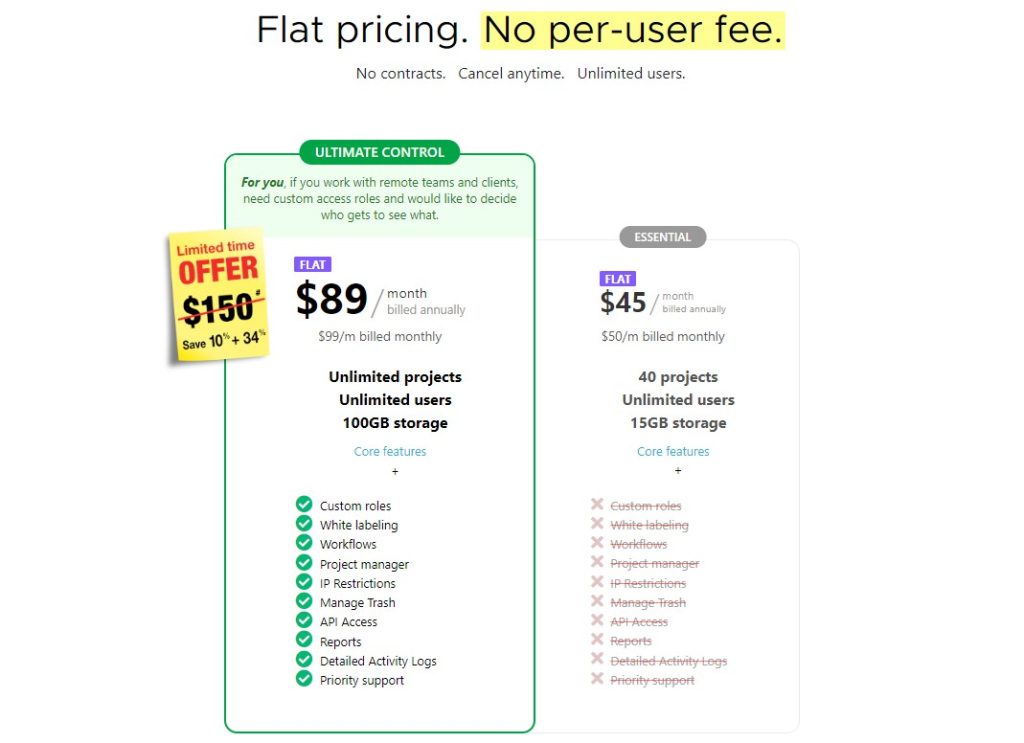
ProofHub provides two pricing plans:
- Ultimate Control ($89 per month).
- Essential ($45 per month).
These pricing are for annual billing.
4# Zoho One
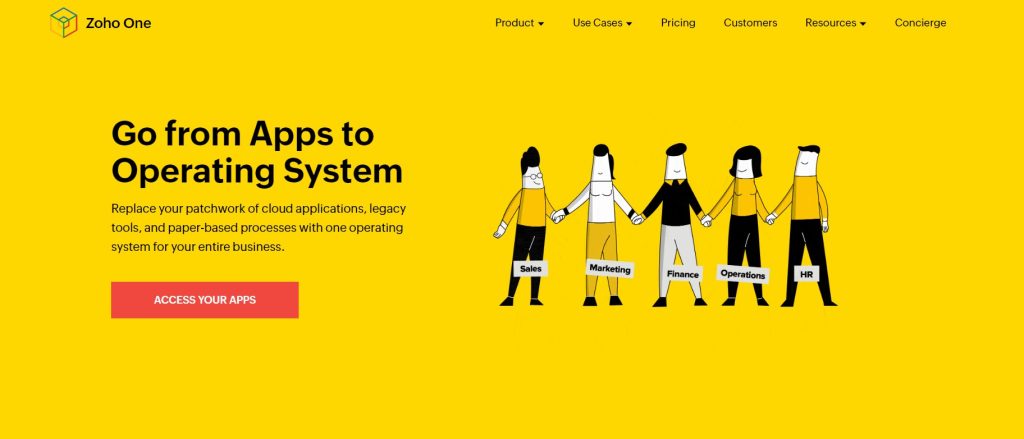
overview
Zoho One is a complete suite of applications that will help you to manage your business. These applications are available as native as well as mobile versions. It will give you centralized administrative control and enterprise-level controls.
Top Features
- Zoho One provides Creator apps for the Windows platform.
- Zoho One offers centralized data of customers to improve customer service and engagement.
- Zoho One also provides Administrator dashboards for performance monitoring.
- Zoho One offers a Time tracking mechanism and conversion of the working hours into bills, and more.
Pricing
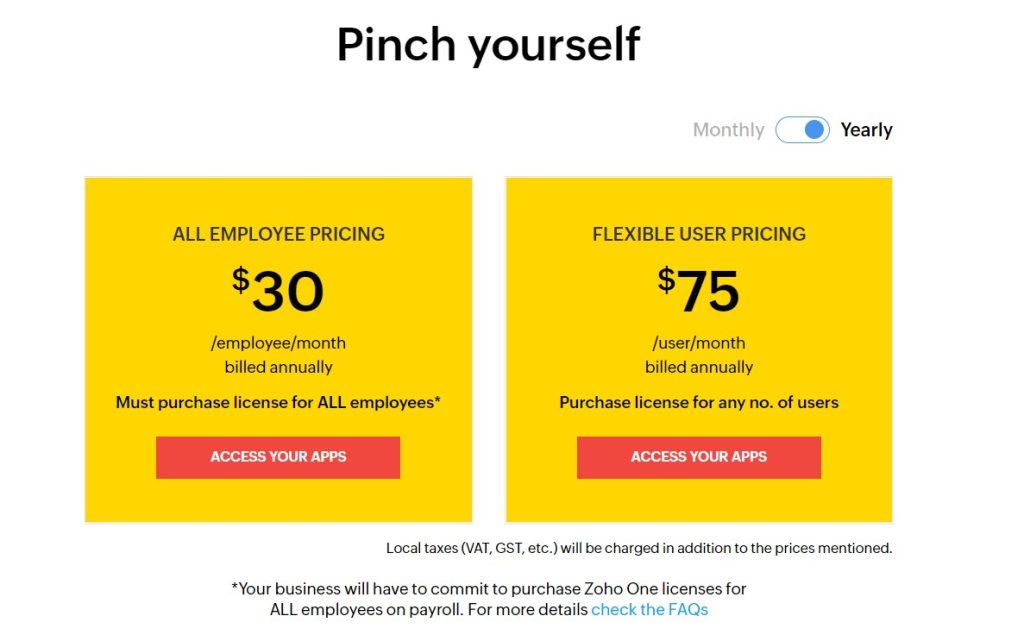
Zoho One offers two pricing plans:
- All Employee: $30 per month.
- Flexible User: $75 per month.
These pricing are for annual billing.
5# Odoo
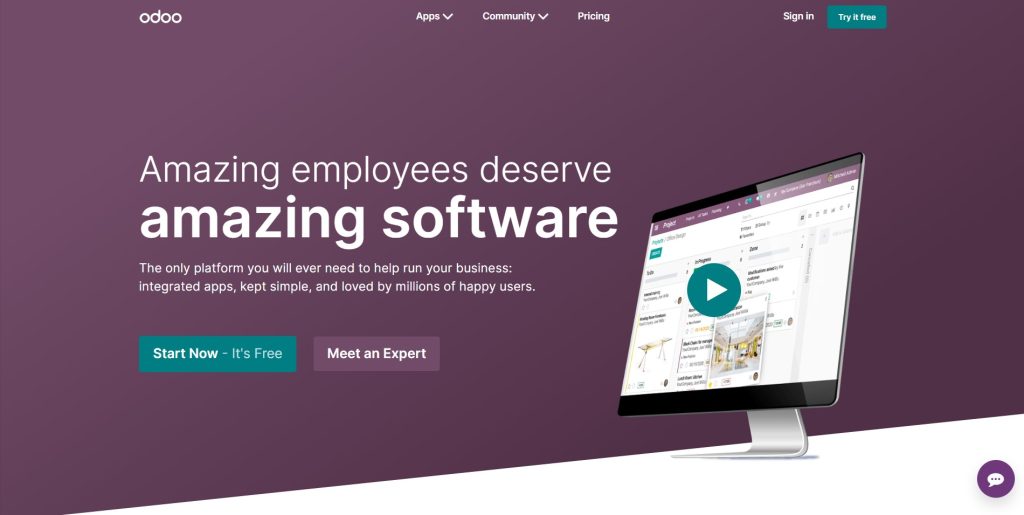
overview
Odoo is an all-in-one business management software that offers a range of business applications that forms a complete suite of enterprise management applications. Odoo’s intuitive database is able to meet a majority of business needs, such as CRM, Sales, projects, Manufacturing, Inventory, and Accounting, just to name a few. All these features help services to manage various types of operations. It replaces the numerous operations that are utilized for handling the sales procedure.
Top Features
- Odoo offers a lot of applications in one place for every kind of business requirement.
- Odoo offers seamless access from wherever you are, from your preferred device.
- Odoo also offers operations applications - Human Resourcing, Accounting, projects, Manufacturing, Inventory, and much more.
Pricing
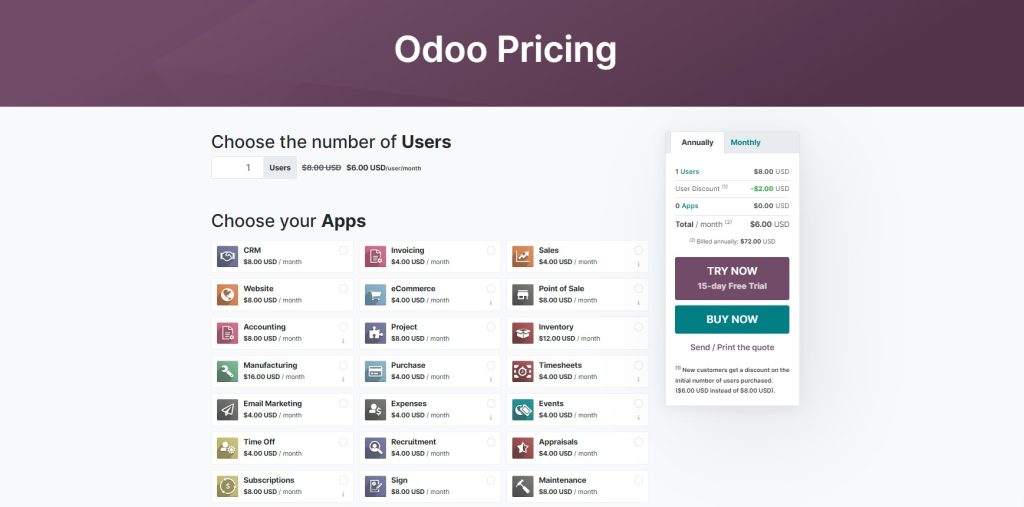
Odoo offers a 15-day free trial. You can also opt for its paid subscription where the base price for a single user is $6 (with a new user discount) + the cost of the apps you choose to add.
6# Wrike
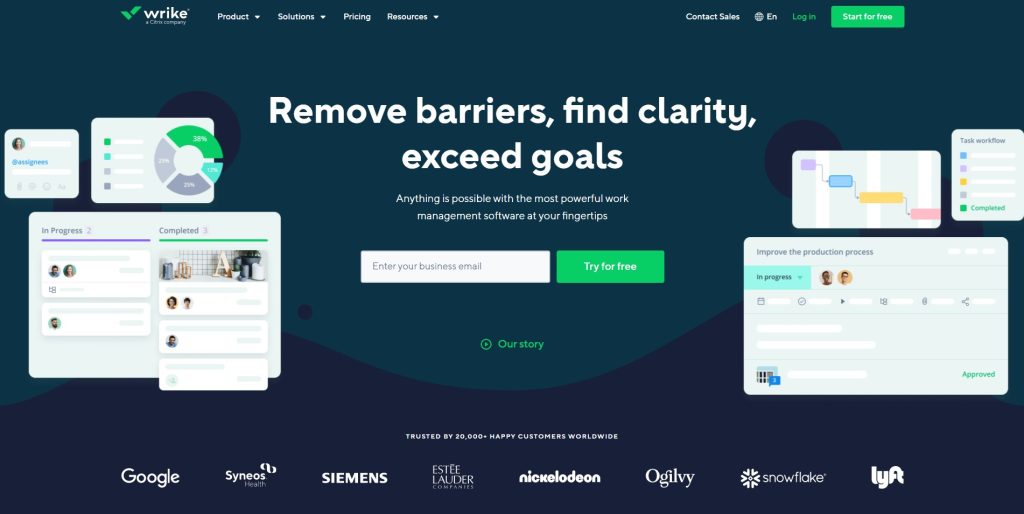
overview
Wrike is the leading enterprise-grade collaborative work management platform that helps companies do their best work — no matter where their employees are based. With many companies moving to a remote work environment for their employees.
Top Features
- Wrike is designed to equip any team with the exact tools they need. Customize dashboards, workflows, request forms, and more.
- Wrike provides the tools your teams need for future growth. Set up your teams for success and instill best practices across your entire organization.
- Wrike enables you to share files, tasks, and reports instantly. Shorten your feedback process with visual proofing and automated approval systems.
Pricing
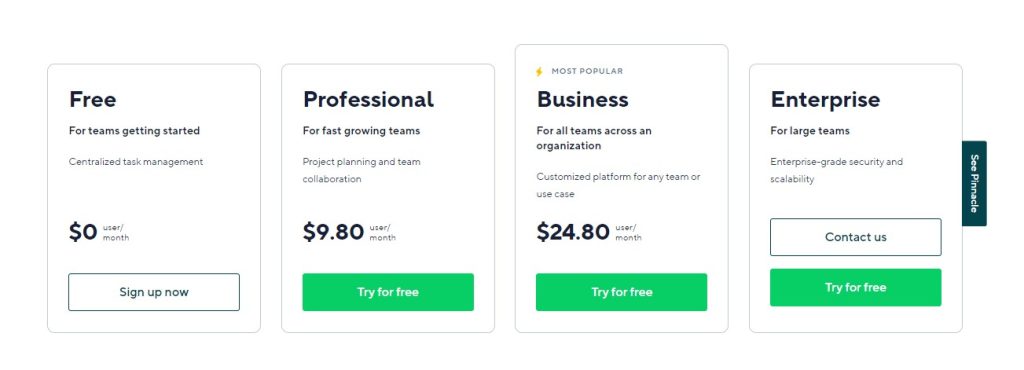
Wrike offer 4 diffrent price plans:
- Free
- Professional – $9.80 per user per month.
- Business – $24.80 per user per month.
- Enterprise – Contact them for more information.
Conclusion
The real value of choosing a business management software is time-saving because running any type of business can be a pain when you find yourself relying on too many single-purpose applications to run your business. That's why you should consider choosing a business management software to help you automate most of your workflow and save your time and resources on scaling your business.
Author’s Bio

Salam is a writer & marketing manager with over (3) years of experience. Salam is passionate about providing valuable content to guide and help people in their decisions in marketing, software, and more.
Salam lives in Baghdad and writes about e-commerce platforms and more on his blog, SalamAhmad.com
The Real Reason Remote Work Fails

Ten days ago, Elon Musk told staff, “Anyone who wishes to do remote work must be in the office for a minimum (and I mean *minimum*) of 40 hours per week or depart Tesla.”
Ordering people to stay in the office is an option, but I don’t think it’s a realistic one. Remote work is here to stay, and any company can make it a permanent element of growth and success, if they work at it.
Last week, at two of the companies where I am on leadership teams, we addressed real-time examples of when remote work fails. The conversations centered around three people who are no longer employed with either organization, all of whom had “other jobs.” Our first issue was discovered on Linkedin. A week after being let go, the manager of a key territory updated their profile to reflect that they had been working full time in a competitive job for over a year. The manager had been under-performing and, in hindsight, given too many “last chances” prior to being terminated.
Next, we discussed having recently parted ways with two teammates who had openly declared side hustles. All three of these individuals were talented and had significant potential, yet all failed to either take the initiative or find enough time to make an impact within their established roles.
Read the original article from ChiefExecutive.net
Google engineer suspended after claims of sentient chatbot

After raising his concern to his manager, he was informed that his evidence was "too flimsy" and that he would need more before the matter was escalated.
According to the engineer, his investigation reached a point where he did not have relevant expertise on the matter, which is why he sought "minimal amount of outside consultation" to help guide him in his probe.
He stressed, however, that he provided a full list of the people that he contacted outside of Google in order to contain any potential leaks.
"At no point has Google reached out to any of them in order to determine whether or not their proprietary information has in fact leaked beyond the specific people I talked to," said the engineer on his post.
"Google has shown no actual interest in maintaining control over their 'proprietary information.' They're just using it as an excuse to get rid of yet another AI Ethics researcher who made too much noise about their unethical practices."
FP&A in spreadsheets: When 'that's how it's always been done' doesn't cut it anymore

Spreadsheets are incredible canvases for financial modeling. For finance teams facing a never-ending barrage of “what-if” questions, they offer a familiar and low cost way to get answers. These qualities are why spreadsheets have survived despite the dozens of FP&A tools on the market today – why fix what isn’t broken? That’s how it’s always been done, after all.
But spreadsheets on their own are indeed broken – or at the very least, they add to the likelihood that something will eventually break. Try as we might to ignore their shortcomings, without fail we’re confronted with the limitations of spreadsheets on a regular basis. And at a certain point, the burden of managing and maintaining spreadsheets outweighs the mild benefits of sticking with the status quo.
Here are a few signs that it’s time to move away from traditional spreadsheets:
You need answers on the fly
Finance leaders are the closest thing most companies have to a crystal ball, and that means you need to provide answers to hard questions about as quickly as a Magic 8 Ball serves up wisdom.
Spreadsheets are a hindrance to gathering speedy insights because the second you hit "save," the spreadsheet is outdated. Spreadsheets are static, and in order for any real analysis to happen, you first have to make sure the data is current and correct. With lots of questions come lots of scenarios, meaning you’re juggling multiple spreadsheets that can fall out of sync faster than you can say, “Outlook is not so good.”
Your team needs
Read the original article from CFO DIve
What CEOs May Not Know About Their Employee Health Plans
 Approximately 50% of Americans receive healthcare benefits from employers, a benefit that 86% of employees surveyed for MetLife’s 20th Annual U.S. Employee Benefit Trends Study 2022 said was a “must have.” Corporate benefits managers are responsible for the increasingly difficult job of evaluating and selecting benefits plans that strike the right balance between comprehensive coverage and financial cost to their organization.
Approximately 50% of Americans receive healthcare benefits from employers, a benefit that 86% of employees surveyed for MetLife’s 20th Annual U.S. Employee Benefit Trends Study 2022 said was a “must have.” Corporate benefits managers are responsible for the increasingly difficult job of evaluating and selecting benefits plans that strike the right balance between comprehensive coverage and financial cost to their organization.
In recent years, the trend in benefit design has leaned toward plans with high deductibles and lower premiums, which shift more out-of-pocket costs to employees. The use of cost-saving strategies that control patients’ access to healthcare services, known as “utilization management” or “UM” has also increased dramatically. And formularies, the list of drugs covered by a health plan, have become more restrictive and include more pricing tiers, which can result in greater expense for employees who need certain medicines.
All this cost-shifting has helped employers keep their benefit costs under control, but what has it done to employees? According to the Kaiser Family Foundation, nearly half (46%) of insured adults report difficulty affording their healthcare out-of-pocket costs. In fact, a recent survey by Bankrate, a personal finance company, found that 56% of Americans would be unable to pay for a $1,000 emergency, such as an unexpected car repair or emergency room visit.
Read the original article from ChiefExecutive.net
Boundaries Are Essential—And As CEO, It Starts With Me

As many workplaces continue to try to coax people back into offices, and employees continue to resist, it seems like it’s worth having a serious chat about boundaries.
In 2021 alone, four million people quit their jobs. Every. Single. Month! And that trend has continued. In March 2022, 6.4 million people did the same. If quitting isn’t the ultimate expression of a boundary, then I don’t know what is. It’s a hard line that says: No more. We’re done. Thanks, but no thanks. You have to wonder, though, what might have happened had their workplaces embraced discussing and setting reasonable boundaries that support healthier, happier people: fair pay, more balance, work from home instead of a soul-sucking commute, no email expectation in off hours. Maybe we wouldn’t be dealing with the Great Resignation (just saying).
It’s not too late. If you’re a CEO or in a position of leadership, model your own boundaries for everyone and give them explicit permission to do the same. At CoderPad, I give everyone access to a “Working With Amanda” manual. It’s not long – 10 bullets or so – but it is the “user guide” to working with me.
Read the original article from ChiefExecutive.net
How SEC ESG disclosure rules will impact private companies

Public companies are waiting to see when and how the Securities and Exchange Commission makes its proposed environmental, social and governance (ESG) disclosure rules final. But private companies can’t ignore what comes out if they’re part of a covered company’s value chain or if they’re thinking about going public in the near future, a specialist on the matter says.
“If the private company is within the value chain, upwards or downwards, of a company that has to provide the Scope 3 metric in their report, they will be asked to help provide that information,” says Julie Rizzo, a partner in the capital markets group of K&L Gates. “They’ll roll up into that company’s Scope 3 emissions that have to go into their SEC reporting.”
Scope 3 refers to greenhouse gas emissions from companies that help a covered company make money, either by being part of its supply chain or providing other value-added services. And whether or not they are subject to SEC reporting requirements themselves, they are expected to cooperate with the covered company. That means measuring and sharing the emissions that stem from their work for that company.
“So, you’re going to have companies that aren’t necessarily thinking that they would be covered by this rule having to provide information to companies that need to provide that information,” Rizzo told Legal Dive.
Read the original article from CFO DIve
Meta exec fears C-suite has forgotten frontline workers

In March, more Americans than ever before – 4.54 million – fled their employer. That’s an increase of 152,000 from February and higher than the former record of 4.53 million in November 2021. The professional and business services sector, as well as the construction industry, saw the most resignations.
“Our mission at Meta is to connect the world and build community,” Trodella says. “One of the largest communities we’re part of is the work community. Frontline workers typically aren’t connected in the same way knowledge workers are. They probably don’t have a PC, they’re not tethered to a desk, they don’t have a voice and are unable to provide feedback or insight. That’s a major problem because some of the best ideas come from those in the field.”
Only 55% of frontline workers feel connected to their organization’s HQ, according to the Deskless not Voiceless research. Meanwhile, 51% believe they are seen as less important than their HQ counterparts and 70% have suffered from, or felt at risk of, burnout over a 12-month period starting from September 2020.
Burnout has certainly been a major contributor to the Great Resignation, as employees in every industry are stressed out from the pandemic, the racial protests of 2020, Russia’s invasion of Ukraine, historic inflation, ever-changing laws and government regulations and everything else that’s happened over the past two years. HR leaders have been tasked with providing the resources employees need to combat stress, burnout, anxiety and other mental health issues.
Read the original article here
Effective onboarding is essential to employee retention

For obvious reasons, employee retention helps in cost reduction. Companies spend millions of dollars in finding, recruiting, onboarding, and training new hires yearly. Costs for advertising, interviewing, and training expenses can instead be used in improving other aspects of the business such as reskilling and upskilling current employees, better facilities, and more benefits to offer to the workforce.
An important part of high retention rates is to have a smooth and smart onboarding process. This is the first step of an employee’s journey with a company and the efforts to make them feel important and welcomed in the organization should start as early as then. It is during this stage that the new employee is forming opinions on the company and whether they would enjoy working for their employer in the long run.
The onboarding process is a great way to not only teach new employees about their role, but to also immerse them in the company culture and create connections with co-workers. Providing a clear set of goals for them during their time as an employee assures them that the company wants to grow with them over time – which increases their satisfaction with the company.
Having a constant turnover of employees can negatively affect the morale and engagement of the workforce. Employees who stay with the company constantly lose work connections which could see them shouldering more work and responsibilities – leading to possible burnouts and lower productivity rates.
Read the original article here
The Right Team For The Next Level

What do you do when you think you’ve outgrown long-term, legacy members of your team? Those employees who were once key members of your band of misfits, who helped you scrap and claw your way from startup to success. Do they fit in now that you’re professionalizing your team and adding key leaders who’ve done this before? How do you know if you’ve simply made a bad hire?
Most entrepreneurs hire reactively. It may work for some of you, but for the vast majority of us, that’s how we end up with people problems. I think there are at least three important things you can do at this stage of growth to build a great team. Before you even begin recruiting, you should: (1) know where your company’s headed; (2) know the key initiatives that will drive that growth; and (3) assess your existing team against those initiatives.
Where do you want your business to be in three to five years? Your vision for the company will impact your team’s hiring needs. Let’s say you’re planning to grow revenue from $10 to $25 million in the next two to three years; how do you plan to do that?
Read the original article from ChiefExecutive.net









